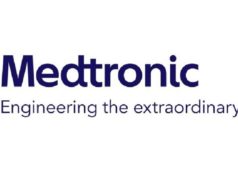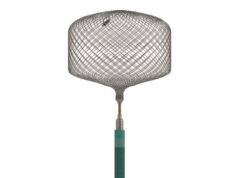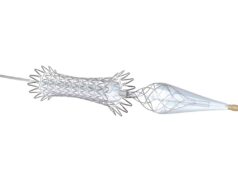
Final results from the PROST randomised controlled trial (RCT) have been published in JAMA Neurology and—according to the study’s leading investigators—provide evidence that thrombectomy with the Preset stent retriever (Wallaby/Phenox) is a safe and effective option in large vessel occlusion (LVO) stroke patients, having demonstrated non-inferiority to the Solitaire revascularisation device (Medtronic).
Early last year, at the International Stroke Conference (ISC; 8–10 February 2023, Dallas, USA), initial results from PROST were presented, with investigators noting that primary and secondary endpoints had been successfully achieved. In a subsequent press release, Wallaby/Phenox also reported that data from the PROST trial supported the US Food and Drug Administration’s (FDA) decision to clear the device for use in the USA.
The full publication of these results, dated 2 January 2024, details that stent retriever-based thrombectomy is highly beneficial in LVO stroke, and many stent-retriever designs are currently available, but “comparison of these technologies in well-conducted studies is lacking”.
Against this backdrop, co-principal investigators Raul Nogueira (University of Pittsburgh Medical Center, Pittsburgh, USA) and Ricardo Hanel (Baptist Neurological Institute, Jacksonville, USA)—alongside fellow investigator Donald Lobsien (Helios Clinic Erfurt, Germany), and other colleagues from across the USA and Europe—conducted the multicentre, prospective, open-label, adaptive PROST RCT. Via blinded primary endpoint evaluations, the study set out to determine whether LVO stroke therapy with Preset is non-inferior to treatment with Solitaire—a device long considered the gold standard in stent-retriever thrombectomy.
Between October 2019 and February 2022, multicentre participation in the trial occurred at 19 research hospitals and/or universities across the USA, as well as five in Germany. LVO stroke patients were enrolled and included up to eight hours after symptom onset, undergoing 1:1 randomisation to thrombectomy with either Preset or Solitaire. PROST’s primary outcome was the difference in the rate of 90-day functional independence across these two groups, using a −12.5% non-inferiority margin for the lower bound of the one-sided 95% confidence interval (CI) of the difference between the two stent retrievers.
A total of 340 patients (median age, 73 years; 50% female) were randomised, and the study procedure was completed in 322 of these patients. The PROST investigators report that—as per intention-to-treat analysis—the trial’s primary endpoint of 90-day functional independence was achieved by 95 patients (54.9%) in the Preset group and 96 (57.5%) in the Solitaire group, giving rise to an absolute difference of −2.57% (95% CI, −11.42 to 6.28).
“As the lower bound of the 95% CI was greater than −12.5%, the Preset retriever was deemed non-inferior to the Solitaire retriever,” the authors write in their JAMA Neurology paper. They go on to note that the non-inferiority of Preset compared to Solitaire was also observed in the secondary clinical endpoint of overall disability, measured as a 90-day shift in modified Rankin scale (mRS) scores.
Similar parity was seen in both of the PROST trial’s angiographic endpoint assessments: successful reperfusion within three thrombectomy passes, and at the first pass. An expanded treatment in cerebral infarction (eTICI) score of 2b50 or greater within three passes was achieved in 146 of 173 patients (84.4%) with Preset versus 149 of 167 (89.2%) with Solitaire (absolute difference, −4.83%; 95% CI, −10.84 to 1.19), while an eTICI score of 2c or greater following the first pass was achieved in 76 patients (43.7%) and 74 patients (44.3%) with Preset and Solitaire, respectively (absolute difference, −0.63%; 95% CI, −9.48 to 8.21).
Outlining results from safety endpoint analyses in the trial, the investigators report that symptomatic intracranial haemorrhage occurred in zero patients in the Preset group and two (1.2%) in the Solitaire group. Mortality occurred in 25 Preset patients (14.5%) and 24 Solitaire patients (14.4%) at 90 days. Furthermore, findings from PROST’s per-protocol and as-treated analyses were in concordance with these results from intention-to-treat analyses.
Speaking to NeuroNews, the authors highlighted the fact that, “in large part due to historical regulatory pathways and financial constraints”, many recent thrombectomy device trials have opted for a single-arm design. However, the PROST trial stands out by “establishing a new scientific benchmark for stroke device trials”, with the goal of ensuring “not only recanalisation, but also a clinical benefit”, they added.
With the newer of the two stent-retriever devices evaluated in PROST having demonstrated non-inferiority to its more established counterpart across a number of effectiveness and safety endpoints, Nogueira, Hanel, Lobsien and colleagues conclude that their findings suggest Preset offers “a safe and effective option for flow restoration and disability reduction in patients with LVO stroke”.









